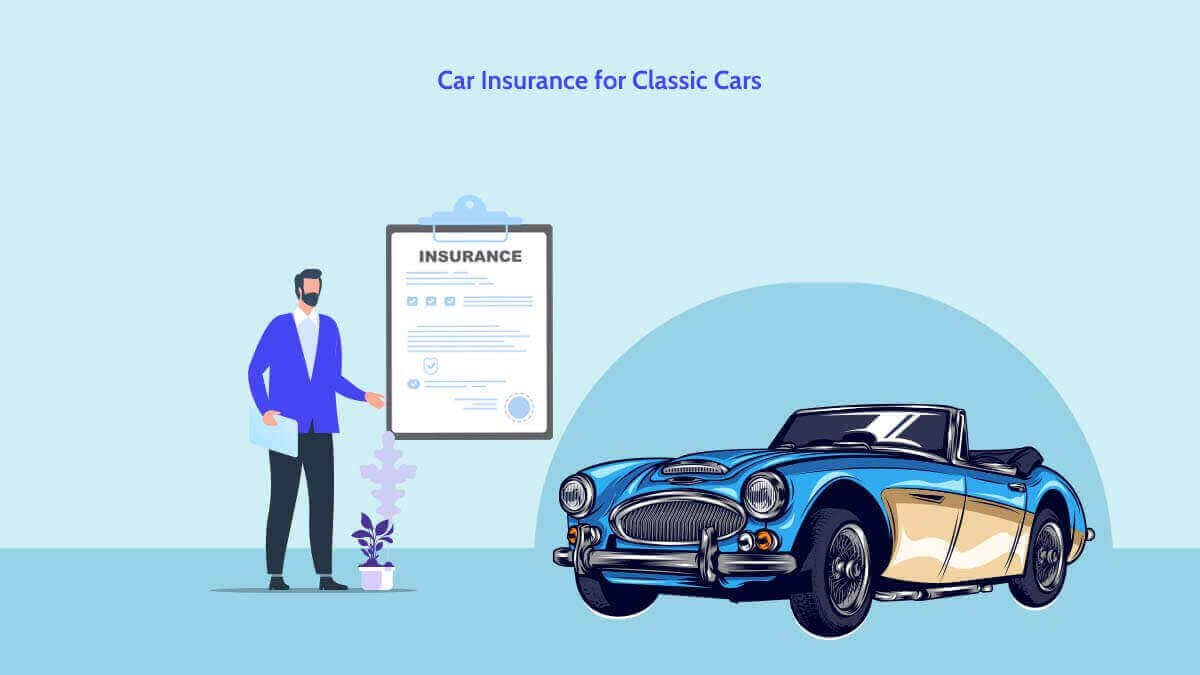Vintage Car Insurance: Comprehensive Protection for Your Classic Vehicle
Owning a vintage car is a passion and a significant investment. Whether it's a classic muscle car from the 60s or an elegant pre-war automobile, these vehicles hold historical value and sentimental worth. Protecting such valuable assets requires specialized insurance coverage. Vintage car insurance is designed to offer tailored protection that standard auto insurance policies may not provide. In this comprehensive guide, we will explore the ins and outs of vintage car insurance, helping you understand why it’s essential, how to choose the right policy, and tips for ensuring your prized possession is adequately protected.

Why Vintage Car Insurance is Essential
-
Specialized Coverage: Vintage cars are unique, and their insurance needs differ from modern vehicles. Standard auto insurance may not cover the full value of a vintage car, especially considering its appreciation over time. Vintage car insurance policies are designed to account for the unique value, usage, and risks associated with classic cars.
-
Agreed Value Coverage: One of the standout features of vintage car insurance is agreed value coverage. This means that the insurer and the car owner agree on the car’s value at the time the policy is purchased. In the event of a total loss, you receive the agreed-upon amount without depreciation, ensuring your investment is protected.
-
Flexible Usage Terms: Many vintage car insurance policies offer flexible usage terms, allowing for occasional pleasure drives, exhibitions, and car shows. Unlike standard policies that assume daily driving, vintage car insurance accommodates the specific needs of classic car owners.
-
Spare Parts and Restoration Coverage: Vintage cars often require rare and expensive parts for maintenance and restoration. Vintage car insurance policies typically include coverage for these parts and the specialized labor needed to maintain the vehicle’s authenticity and value.
Choosing the Right Vintage Car Insurance Policy
-
Assess Your Car’s Value: Before purchasing insurance, have your vintage car professionally appraised. This will help you understand its market value and ensure you get adequate coverage.
-
Compare Providers: Not all insurance companies offer vintage car insurance. Research and compare providers that specialize in classic car insurance. Look for companies with a strong reputation and positive customer reviews.
-
Understand Coverage Options: Different policies offer various levels of coverage. Common options include liability, collision, comprehensive, and uninsured/underinsured motorist coverage. Ensure you understand what each type of coverage entails and select the ones that best meet your needs.
-
Check for Additional Benefits: Some vintage car insurance policies come with additional benefits such as roadside assistance, towing, and coverage for trip interruptions during car shows. These benefits can provide extra peace of mind and convenience.
Tips for Lowering Vintage Car Insurance Premiums
-
Join a Car Club: Many insurance providers offer discounts to members of recognized classic car clubs. Joining a club can also provide access to valuable resources and a community of fellow enthusiasts.
-
Secure Storage: Keeping your vintage car in a secure, climate-controlled garage can reduce the risk of damage and theft, potentially lowering your insurance premiums.
-
Limited Mileage: Opt for a policy with limited mileage if you only drive your vintage car occasionally. Insurers often offer lower rates for policies that restrict annual mileage.
-
Bundle Policies: If you have multiple vehicles or other types of insurance, consider bundling them with the same provider. Bundling can often lead to significant discounts.
-
Maintain a Clean Driving Record: A history of safe driving can positively impact your insurance rates. Avoid traffic violations and accidents to keep your premiums low.
Understanding Policy Exclusions and Limitations
While vintage car insurance provides extensive coverage, it’s crucial to understand its limitations and exclusions. Common exclusions may include:
- Daily Use: Vintage car insurance is typically not intended for daily commuting. Using your classic car for everyday transportation may void the coverage.
- Unlisted Drivers: Ensure all potential drivers of the vehicle are listed on the policy. Unlisted drivers may not be covered in the event of an accident.
- Unauthorized Modifications: Making unauthorized modifications to your vintage car can affect its coverage. Always inform your insurer of any changes to the vehicle.
Claims Process for Vintage Car Insurance
Filing a claim for a vintage car can be a different experience compared to standard auto insurance claims. Here’s a step-by-step guide to help you navigate the process:
- Document the Damage: Take detailed photos and videos of the damage to your vehicle. This documentation will be crucial for the claims process.
- Contact Your Insurer: Notify your insurance company as soon as possible. Provide them with all necessary information and documentation regarding the incident.
- Appraisal and Inspection: Your insurer will likely send an appraiser to inspect the damage. They will assess the extent of the damage and estimate repair costs.
- Repair and Restoration: Work with your insurer to select a repair shop that specializes in vintage cars. Ensure that the shop uses authentic parts and follows proper restoration techniques.
- Claim Settlement: Once the repairs are complete, your insurer will process the claim and cover the costs as per the agreed value policy.
The Importance of Regular Policy Reviews
As the value of your vintage car can change over time, it’s essential to review your insurance policy regularly. Annual appraisals and policy reviews ensure that your coverage remains adequate and up-to-date. If your car’s value increases, you may need to adjust your coverage to reflect its current market value.
Conclusion
Vintage car insurance is a vital investment for any classic car owner. It offers specialized coverage tailored to the unique needs of vintage vehicles, ensuring that your prized possession is adequately protected. By understanding the intricacies of vintage car insurance, comparing providers, and choosing the right policy, you can drive your classic car with peace of mind. Remember to regularly review your policy, maintain your vehicle’s value, and enjoy the journey of owning a piece of automotive history.
Protecting your vintage car with the right insurance is more than just a legal requirement; it’s about preserving a legacy and ensuring that future generations can appreciate the beauty and history of these timeless machines.


You must be logged in to post a comment.